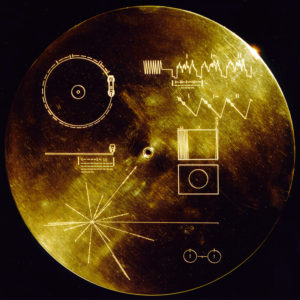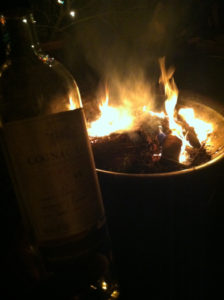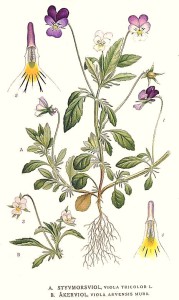In the Northern Hemisphere, just past midnight tonight, arrives the summer solstice. The precise moment is 12:24 AM here in the Eastern Daylight Time Zone, but if you’ve been reading the Convivio Book of Days for any length of time, I think you know how I feel about precision. I am more of a roundabout kind of guy. Be that as it may, come 12:24 AM here in Lake Worth, it will, officially by the almanac, be summer.
Though I may not care much for precise moments in time, still it is important to have precision in our lives, and so here comes yet another apology from your humble Book of Days author, for I have been leading you astray for years now in yet another matter, a scientific one. This time it turns out I’ve been absolutely wrong about the celestial mechanics of our great planet. I have always pictured the planet rocking back and forth as it orbits the sun, like a great pendulum, thereby creating our seasons. I was so wrong. Here’s what I’ve learnt, only since the last solstice in December: our great planet remains fixed as it spins, always tilted at 23.5 degrees, and it is this constant tilt of the planet that creates the seasons. We travel around the sun; a journey that lasts for one year. For half the year the Northern Hemisphere receives more sunlight thanks to this tilt. And for the other half of the year, the Southern Hemisphere receives more sunlight. So, thanks to this 23.5 degree tilt, we in the Northern Hemisphere receive more sunlight from the vernal equinox in March through the autumnal equinox in September.
It’s all about geometry, which is probably why it’s taken me so many years to grasp this basic understanding. I checked out from math somewhere along the time that geometry was introduced to my studies. My loss, I know, but apparently yours, too, if you’ve been reading all these years and believing what I’ve been telling you.
But now that we are all in the know and have a different (ahem, accurate) depiction of our planet’s celestial mechanics, let us focus on the social customs of the summer solstice, this longest day. The solstice marks the furthest north the sun will appear in the sky. The sun will appear to stand still there at its northern zenith, and that’s the origin of the word solstice, from the Latin sol stetit, “sun stands still.” The days have been lengthening since the winter solstice in December, but now once again daylight begins to wane. Each day after the solstice there will be a few seconds less sunlight than the day before, and so it will go until the winter solstice comes once more next December. Each day slightly different than the one before and the one to follow: the constant rearrange. Even for those of us who do not like change, the understanding that change is forever happening.
It is the start of summer by the almanac, but by traditional reckoning of time, summer began at the start of May with the arrival of May Day. This older approach to time places the solstices and the equinoxes at the middle of each season, which is a considerably more logical approach. At least I think so. Looking at things as our ancestors did, it begins to seem odd to mark the start of summer with this last of the lengthening days, and the start of winter with the last of the lengthening nights. These days are, more naturally, midpoints of the seasons.
And so our ancestors thought of this time as Midsummer, with Midwinter at the winter solstice. Pagan festivals grew up around these celestial events and eventually, with the spread of Christianity, so did Church festivals. To Midwinter the Church attached the birth of Christ; to Midsummer, the birth of John the Baptist. And while we don’t celebrate these holidays precisely on the solstice, they are both solidly connected to the celestial events and the times of sol stetit with both Christmas and St. John’s Day just a few days after their respective solstice, the sun appearing to stand still at both.
Across cultures, these transitional times were long considered magical. Witches and fairies and sprites were more active, animals gained powers of speech. Our friend William Shakespeare was well attuned to this lore: his comedy A Midsummer Night’s Dream, which I have long loved, is set on St. John’s Eve. In the play, the realm of the fairies and the realm of the mortals blend as one, at least for a night or two. This is the magic that can attend these days, as the balance of light and dark on our planet begins to shift again. Summer is here, but it’s been here a while already. Magic is here, too, revealed to us if we are open. I love this, and these are some of my favorite days each year, even though they are not much celebrated. I think that’s too bad. I hope you’ll come back and read more about them here at the blog come St. John’s Eve on the 23rd: Old Midsummer Eve. For now, though: Solstice Greetings.
Image: Voyager Golden Record. It’s the gold aluminum cover designed to protect the Voyager 1 and 2 “Sounds of Earth” gold-plated records from micrometeorite bombardment. The cover also serves a double purpose in providing the finder a key to playing the record. The explanatory diagram appears on both the inner and outer surfaces of the cover, as the outer diagram will be eroded in time. Flying aboard Voyagers 1 and 2 are identical “golden” records, carrying the story of Earth far into deep space. The 12 inch gold-plated copper discs contain greetings in 60 languages, samples of music from different cultures and eras, and natural and human-made sounds from Earth. They also contain electronic information that an advanced technological civilization could convert into diagrams and photographs. Currently, both Voyager probes are sailing adrift in the black sea of interplanetary space, flying towards the outmost border of our solar system. NASA Jet Propulsion Laboratory, 1977 [Public domain] via Wikimedia Commons.


